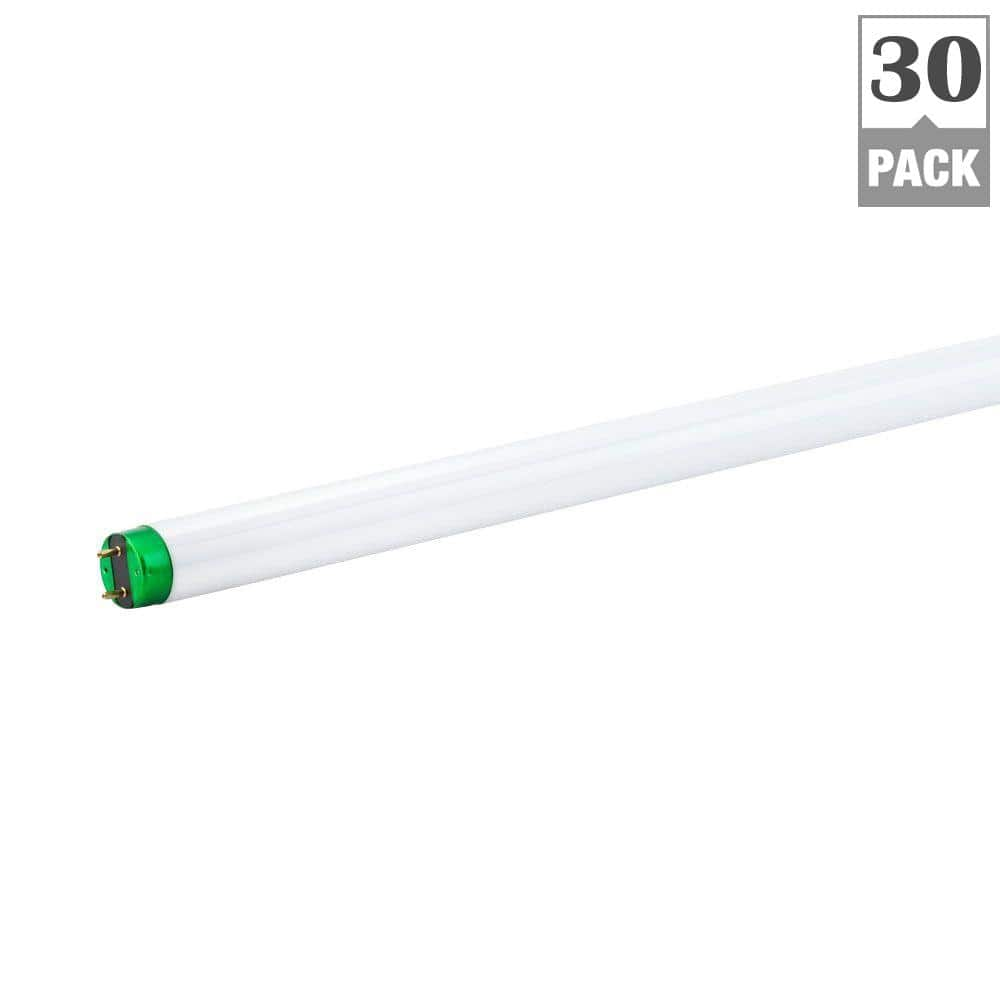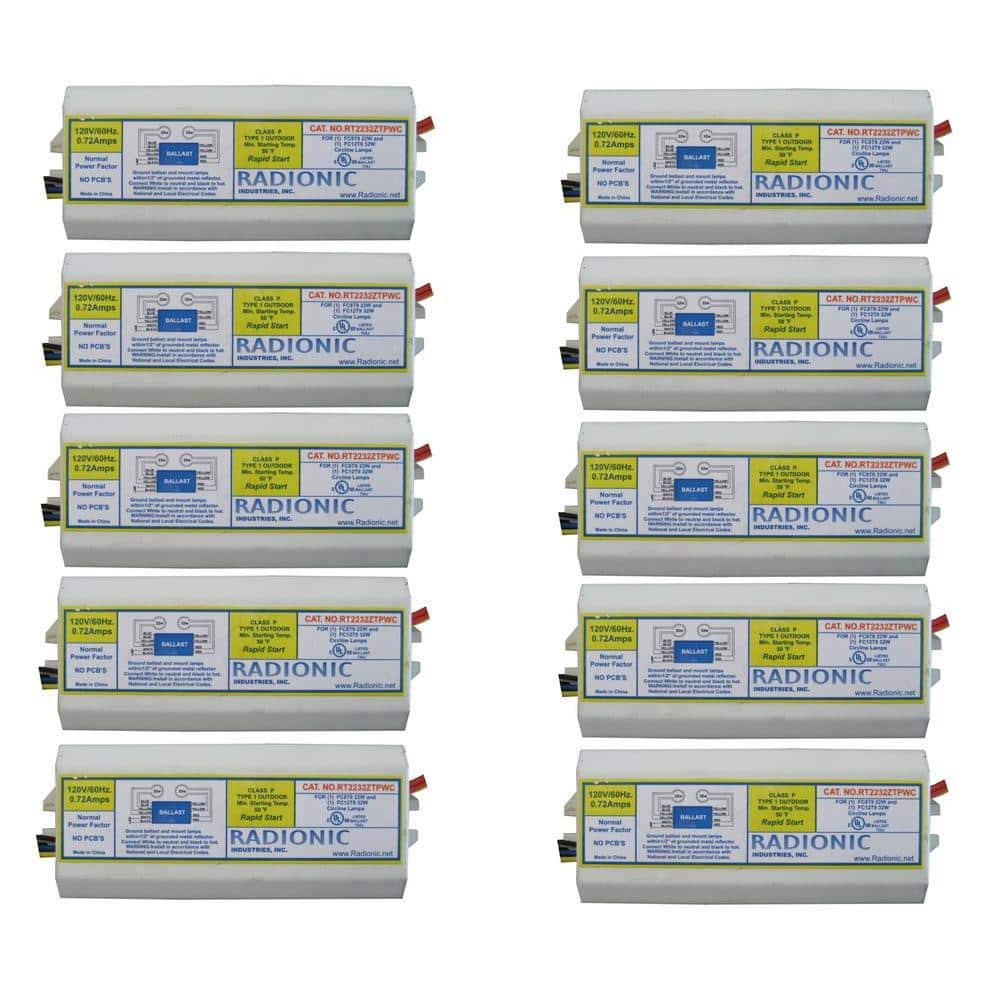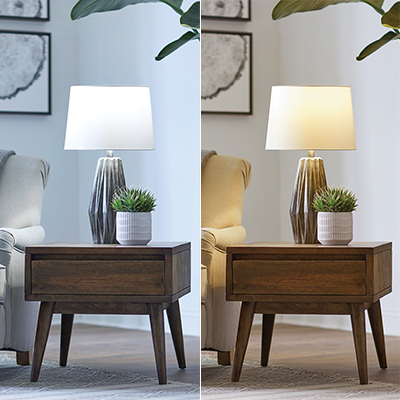Types of Tube Lights

Last updated April 15, 2025
Tube lights, known as linear light bulbs, are frequently used in office buildings, kitchens and commercial installations, as well as in homes, with varying sizes and brightness levels. This guide highlights the different types and configurations of tube lights, both fluorescent and LED, so you can choose the best tube lights for your light fixtures and other lighting needs.
Table of Contents
How to Find the Right Tube Light
Fluorescent vs. LED Tube Lights
Upgrading from Fluorescent to LED Lights
How to Find the Right Tube Light

If you find yourself in need of a replacement tube for an existing fixture, the first thing to consider is the shape, size, length and diameter of the bulb you are trying to replace. Like typical bulbs, tubes also come in different sizes, lengths and diameters. You'll want to find a replacement tube in the same shape, size and length of the existing tube bulb.
T12, T8 and T5 are types of tubes. The terminology comes from “T” for “tubular,” and the diameter of the bulb is in eighths of an inch. “T8” represents a tube of 8/8ths of an inch, or 1 inch. A simple way to differentiate the bulbs is the width of the bulb.
- T12 lights have a regular width and a diameter of 1-1/2 inches.
- T8 lights have a thin width and a diameter of 1 inch.
- T5 lights have an ultra-thin width and a diameter of 5/8 inch.
Fluorescent vs. LED Tube Lights

Fluorescent tube lights are low-pressure, mercury-vapor gas discharge lamps that use fluorescence to produce visible light. Fluorescent tubes require either an electronic ballast or magnetic ballast to regulate the flow of electricity.
LED tube lights are increasingly used to replace fluorescent lights. Compared to fluorescents, LED lighting lasts longer, is more energy efficient and uses no mercury. LED lights also offer superior light quality with no flickering. They also turn on immediately without any warmup time required.
Upgrading from Fluorescent to LED Lights

LED tube lights not only offer energy efficiency, but bulbs and ballasts for T12 fittings are becoming increasingly rare, and T8 bulbs and electronic ballasts may become similarly scarce soon. Now is the time to consider updating older bulbs to LED technology.
If you want to prioritize which bulbs to replace first, look for any T12 bulbs. T12 fluorescent ballasts are the most inefficient ballasts when compared to T8 fluorescent ballast. Therefore, replacing T12 fluorescent tubes with an LED T8 type A, type B or type A/B linear tube will provide the greatest energy and dollar savings.
Outdated fluorescent tubes can also be replaced with integrated LED light fixtures such as LED strip lights, troffers and panel lights.
There are different LED tube light solutions to consider. Some tubes are easy, direct replacements like most general-purpose light bulbs, while others require some rewiring but offer greater energy efficiency and lower maintenance costs over time. Common installation types include:
- Direct fit or “plug-and-play” (type A) LED tubes can be directly swapped out for fluorescent tube lights with no additional adjustments. They are easy to install, but the approach requires the ballast to function properly.
- Ballast-bypass (type B) LED tubes replace most T8 and T12 tubes with electronic ballasts and require direct wiring and longer installation time. Bypassing the ballast increases operation efficiency and reduces maintenance.
- Direct replacement plus ballast bypass (type A/B) LED tubes are a universal application with quick-and-easy, direct plug-and-play installation. You can also direct wire with ballast bypass for less maintenance over time. Use this type of tube as a plug-and-play replacement. But if the ballast fails, bypass the ballast and continue to use the same fixture.
If your light fixture is more than 20 years old, the ballast inside may be worn out. These old ballasts can fail when introducing a new lamp. For long-term reliability, remove the ballast and use a direct wire (type B) lamp. A type A/B lamp is especially convenient when putting new lamps into an old fixture, as it can start out as a direct replacement. However, if the fixture ballast fails, the same lamp can be used after removing the ballast from the circuit.
Just as fluorescent lamps replaced incandescent bulbs in many lighting applications, LED tube lights are frequently replacing fluorescents. This costs more up front, but the benefits allow for less energy consumption and lower power bills over time. No matter which type of light bulbs you need, find products fast with image search in The Home Depot Mobile App. Snap a picture of an item you like and we'll show you similar products.

































